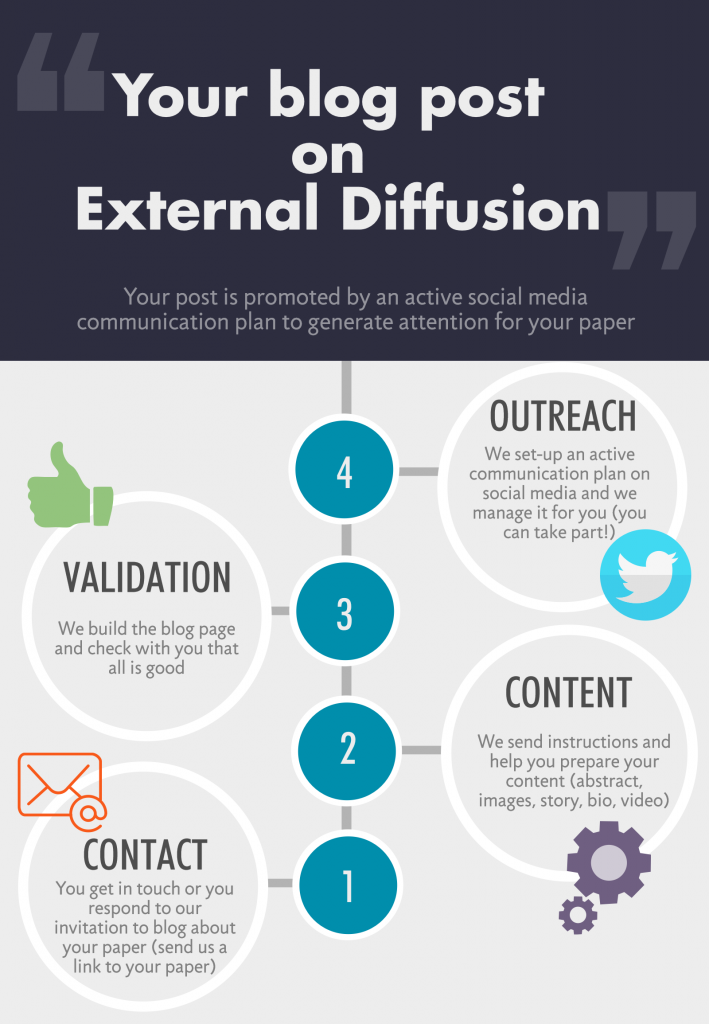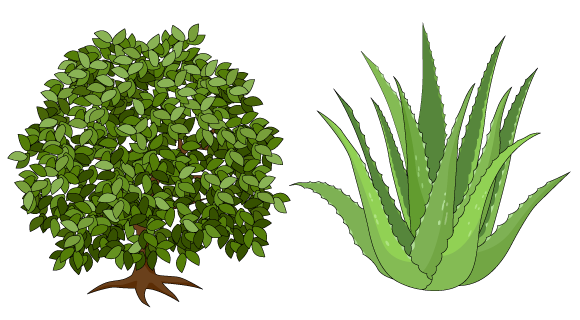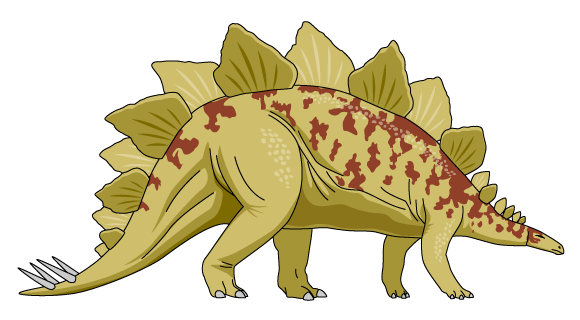"Vi mener at det å publisere en artikkel ikke er målet for en forsker". We did a little interview with External Diffusion about their work and how they are improving science communication. Check it out!
1. Hva var vendepunktet for opprettelsen av External Diffusion?
As a scientist, Damien felt the need to share his work in a different way, in addition to scientific papers and communications at conferences. He started a personal blog and began to be active on Twitter. Writing blog posts about scientific papers (his own or some other interesting piece found in the literature) was an exercise he enjoyed a lot. The point is to use alternative communication style, outside of the austere canvas of scholarly communication and avoiding its jargon. However, and despite outreach efforts, he realized by looking at the website stats that it was very tricky to get eyes on these articles.
Våren 2015 fikk Damien en idé da han snakket med broren Alex, som er gründer innen web og sosiale medier: et nettknutepunkt som ville garantere et relevant og massivt publikum for forfattere av vitenskapelige publikasjoner som ønsker å blogge om artikkelen sin. Damien kom opp med alle de tingene forfatterne ville elske å dra nytte av. Alex kom opp med tekniske løsninger og forslag for å tilby enda mer. Sammen designet de nettstedet og begynte å rekruttere de første bidragsyterne og følgerne på sosiale medier. Nettstedet ble lansert i oktober 2015.
2. Hvordan kan ekstern diffusjon hjelpe forskere med å kommunisere funnene sine?
Vi mener at publisering av en artikkel er ikke endepunktet for en forsker. Most researchers feel the need to talk about their findings in complementary ways. For examples, they go speak at conferences to make sure the community hears about their work. They sometimes use the services of the communication department at the university, to reach out to the general press. Some also communicate directly via social media. Blogging is yet another channel of science communication, dissemination, outreach, promotion (call it how you like). To make an impact via blogging, writing great content is not enough; you need a wide and relevant audience.
The External Diffusion blog post consists of a multi-section page that can host various types of engaging contents (infographics, illustration, multiple links, author biography, video, etc.). The content is provided by the author on the basis of a template we propose. If requested, we help with creating the contents. The strength of External Diffusion is the audience and the active social media outreach. Once the post is live on the website, we activate a true communication plan, to make sure the post and the article are discussed online by the relevant community.
3. Hvordan reagerte det vitenskapelige miljøet på arbeidet ditt?
Vi startet med en håndfull innlegg og nesten ingen følgere på sosiale medier. Nå publiserer vi ett innlegg omtrent hver uke, og publikummet vårt vokser veldig raskt (f.eks. 5000 følgere på Twitter). Det som er viktig, er det høye engasjementet (RT, likes osv.) som innleggene våre i sosiale medier genererer, og antallet som "klikker seg videre" til den faktiske vitenskapelige artikkelen som forfatterne ønsker å promotere. Vi får mange positive kommentarer fra samfunnet, og det er vi veldig glade for!
4. Hva er de neste trinnene for ekstern diffusjon?
The next step for the development of the start-up is to establish a sustainable business model. We are looking for institutional partners – universities, research consortia, networks, etc. – who would like to benefit from our services on a regular basis. We want to continue build our social media audience. We will also soon propose fee-based services for the preparation of contents like infographics, illustrations, video, and popularization articles. Finally, we have a gjestebloggside der vi publiserer eksterne bidrag om ulike temaer knyttet til vitenskapelig publisering og forskning. Vi planlegger å utvide denne siden for å fortsette samtalen med samfunnet (forslag er velkomne!).
5. Hvordan ser du for deg at forskningskommunikasjonen vil være om et par år?
Science communication has multiple forms. There will always be scientists who think that their papers “speak by themselves” and don’t need any additional form of outreach. And in some case it may indeed work for what they want to do. Yet, scholarly science communication is in the middle of a revolution: open access, open science, open data, preprints, post-publication peer review, collaborative publications, etc. Social media also multiplies information sources. In this flow of information, from the perspective of the scientific author, it will be more and more important to be able to stand out. Thus, managing online presence and e-reputation will be a must.
Fra perspektivet til den vitenskapelige leseren, som må takle dagens informasjonsoverflod, det er en god idé å lese vitenskapsblogger. In terms of communication forms, innovation is already there with interactive posters, social media chats and live videos, etc. Yet, we do believe that the good old paper will survive for long years because science communication is not only about conveying strong message; it is also about sharing methods and data in a precise and detailed manner so as to allow the community to build upon existing work and progress further. Probably, a mission of growing importance for science communicators will be to engage with the society, the media and even the political sphere to help rationalize biased science debates (migration, climate change, vaccines, etc.). Truncated messages can be easily conveyed in today’s communication frenzy and scientists must help debunk this.

Abonner på nyhetsbrevet vårt
Eksklusivt innhold av høy kvalitet om effektiv visuell
kommunikasjon innen vitenskap.






